Mehmet Berkay On
Scalable Nanophotonic-Electronic Spiking Neural Networks
Aug 28, 2022

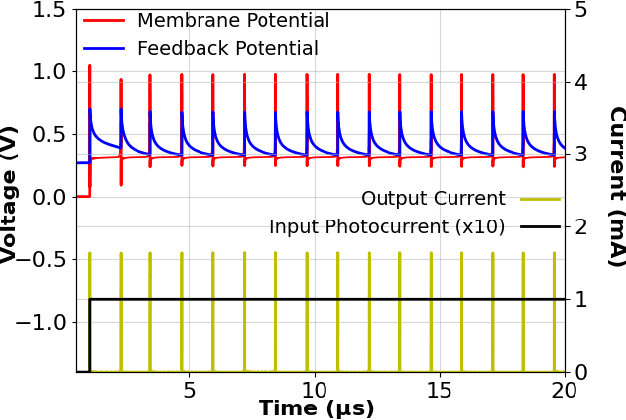
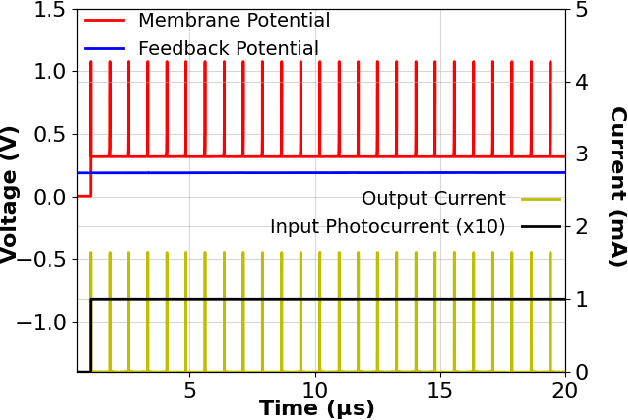
Abstract:Spiking neural networks (SNN) provide a new computational paradigm capable of highly parallelized, real-time processing. Photonic devices are ideal for the design of high-bandwidth, parallel architectures matching the SNN computational paradigm. Co-integration of CMOS and photonic elements allow low-loss photonic devices to be combined with analog electronics for greater flexibility of nonlinear computational elements. As such, we designed and simulated an optoelectronic spiking neuron circuit on a monolithic silicon photonics (SiPh) process that replicates useful spiking behaviors beyond the leaky integrate-and-fire (LIF). Additionally, we explored two learning algorithms with the potential for on-chip learning using Mach-Zehnder Interferometric (MZI) meshes as synaptic interconnects. A variation of Random Backpropagation (RPB) was experimentally demonstrated on-chip and matched the performance of a standard linear regression on a simple classification task. Meanwhile, the Contrastive Hebbian Learning (CHL) rule was applied to a simulated neural network composed of MZI meshes for a random input-output mapping task. The CHL-trained MZI network performed better than random guessing but does not match the performance of the ideal neural network (without the constraints imposed by the MZI meshes). Through these efforts, we demonstrate that co-integrated CMOS and SiPh technologies are well-suited to the design of scalable SNN computing architectures.
Izhikevich-Inspired Optoelectronic Neurons with Excitatory and Inhibitory Inputs for Energy-Efficient Photonic Spiking Neural Networks
May 03, 2021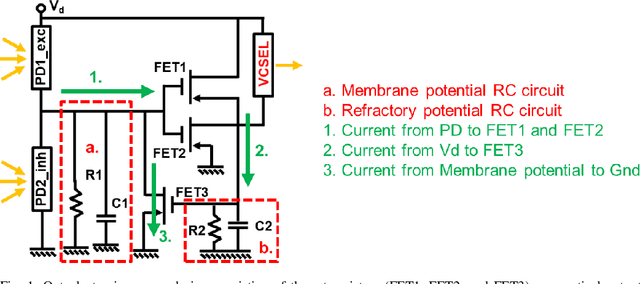
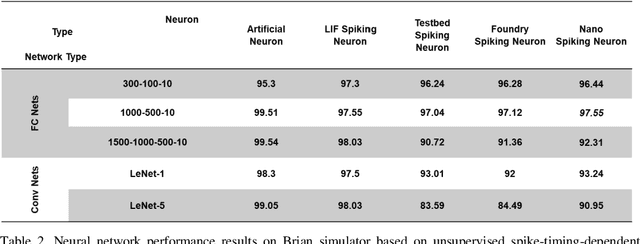
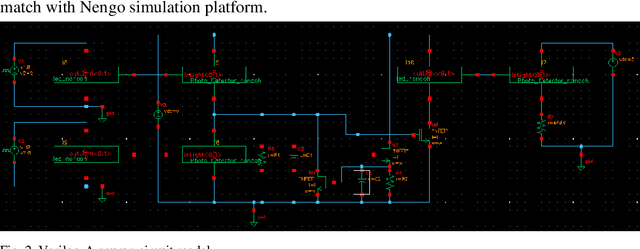

Abstract:We designed, prototyped, and experimentally demonstrated, for the first time to our knowledge, an optoelectronic spiking neuron inspired by the Izhikevich model incorporating both excitatory and inhibitory optical spiking inputs and producing optical spiking outputs accordingly. The optoelectronic neurons consist of three transistors acting as electrical spiking circuits, a vertical-cavity surface-emitting laser (VCSEL) for optical spiking outputs, and two photodetectors for excitatory and inhibitory optical spiking inputs. Additional inclusion of capacitors and resistors complete the Izhikevich-inspired optoelectronic neurons, which receive excitatory and inhibitory optical spikes as inputs from other optoelectronic neurons. We developed a detailed optoelectronic neuron model in Verilog-A and simulated the circuit-level operation of various cases with excitatory input and inhibitory input signals. The experimental results closely resemble the simulated results and demonstrate how the excitatory inputs trigger the optical spiking outputs while the inhibitory inputs suppress the outputs. Utilizing the simulated neuron model, we conducted simulations using fully connected (FC) and convolutional neural networks (CNN). The simulation results using MNIST handwritten digits recognition show 90% accuracy on unsupervised learning and 97% accuracy on a supervised modified FC neural network. We further designed a nanoscale optoelectronic neuron utilizing quantum impedance conversion where a 200 aJ/spike input can trigger the output from on-chip nanolasers with 10 fJ/spike. The nanoscale neuron can support a fanout of ~80 or overcome 19 dB excess optical loss while running at 10 GSpikes/second in the neural network, which corresponds to 100x throughput and 1000x energy-efficiency improvement compared to state-of-art electrical neuromorphic hardware such as Loihi and NeuroGrid.
 Add to Chrome
Add to Chrome Add to Firefox
Add to Firefox Add to Edge
Add to Edge